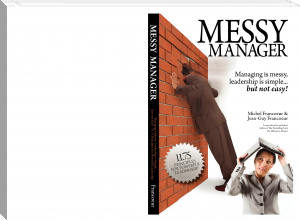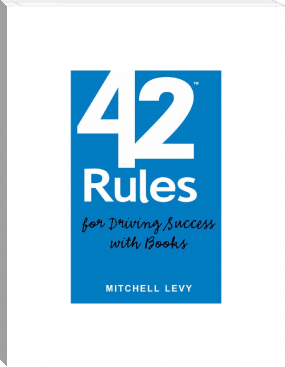Driving to Perfection by Brian Fielkow (good e books to read .txt) 📕

- Author: Brian Fielkow
Book online «Driving to Perfection by Brian Fielkow (good e books to read .txt) 📕». Author Brian Fielkow
Driving to Perfection:
Achieving Business Excellence by Creating a Vibrant Culture
By: Brian Fielkow
Chapter 3: Rich Culture vs. Poor Culture
There are many reasons why companies do not take the culture-building plunge. Most often, executives see “culture” as a difficult-to-define, elusive, entity—or a soft-and-fuzzy, feel-good waste of time. I’m here to tell you that measureable business success comes from a company’s culture.
Our business culture serves the hardcore business purpose of guiding us as we carry out our mission to achieve excellence and profitability. Culture can be considered a map, as well as the ground rules for what we, as a company—regardless of any individual roles—will not compromise. These values, when clearly articulated and consistently reinforced, will guide all decisions made by anyone in the company—from the front lines to the back offices.
As you embark on this journey, you may encounter resistance and disbelief from those around you. Who can blame employees for their skepticism? Many corporations continuously shift the earth beneath their employees’ feet. For many employees, “establishing culture” often equates to the intrusion of outside consultants or catchy one-off themes. But, if implementation is done right, most of the organization should be on board within three to six months—or as soon as you have proven that shared values benefit their roles within the company. Your job is to win your employees over—and to weed out those who cannot be won.
You—as a leader—can create the values that guide your company. Only employees can effectively hold each other accountable for living those values. In other words, you must live your cultural values each day to instill what drives success throughout the organization.
What are the signs of a poor culture? In essence, a poor culture is one in which senior management does not invest in the development of the company and its people or processes. There is neither communication of, nor enforcement of, what are accepted and expected behaviors. Some companies ignore the need for culture building, and others outsource it to outside consultants. In the end, the result of these half-hearted attempts is the same: employees do not adopt a new, vibrant culture because it is not shown to be important to the company’s leadership. Basically, the ship is drifting with no captain at the helm.
In a poor culture, everyone works in their silos—their distinct departments or divisions of the company. Employees are more concerned about what is best for themselves or their teams, rather than for the greater benefit of the enterprise. Employees are not empowered and, in fact, are often afraid to make decisions for fear of being wrong. The leaders of a business with a poor culture perform a parental role, simply mediating disputes and being the all-knowing problem solvers.
In a poor culture, new employee orientation happens at the water cooler. Existing employees advise the unfortunate new hires to keep their heads down and mouths shut. New employees are cautioned that innovative thinking is quickly shot down, and that, to survive, you shouldn’t make waves.
After I acquired Jetco in 2006, a few employees approached me—coincidentally, by the water cooler. They welcomed me to the company and then gave me some advice: “You take care of us, and we’ll take care of you.” My new-employee orientation had begun. I knew exactly what my new friends were telling me. If I gave them what they wanted, they would let the rest of the team know that the new owner was okay. On the other hand, if I rocked the boat, things might not work out so well. They obviously wanted a leader who went with the flow, instead of driving new initiatives.
Without a leader advocating for a richer culture, your business culture is being created for you by employees who may not be in line with your values. If you are not investing effort into developing a great culture, I guarantee that your company’s culture is being defined for you—at this very moment as you are reading this book.
In a rich culture, senior leadership is fully engaged. However, the culture and its continual development are owned and driven by the employees. Employees instantly know the right action to take because they understand the company’s values. They understand the company’s process and decision-making framework.
In a healthy culture, the opinion leaders become your greatest asset. Instead of making veiled threats around the water cooler, they are the ones promoting a rich culture. They are educating new employees about the proactive, value-based behavior necessary for success in the company.
Signs that a poor culture is in place:
Senior management delegates the upkeep of—or ignores—culture and fails to live by the company values Culture is seen as a project, not a way of life Culture conversations are reactive and occur only when trouble erupts Employees lack empowerment and are not appreciated Cultural engagement is left to outside consultants and fancy posters with no long-term effort made to make the culture integral to the organization Bad behavior is ignored or—even worse—accepted
Signs that a rich culture is in place:
The whole company is fully engaged in building a world-class culture Culture is woven into every “peer to peer” interaction Employees share a common vision and are fully empowered to behave in alignment with that vision Culture centers around consistent messages which are communicated often throughout the organization Silos do not exist Customers and outsiders immediately sense a unique experience when dealing with your company because of its culture
The reality is that all businesses are likely to embody elements of both a rich and poor culture. On our path to excellence, we must drive out the poor elements and continuously build upon the rich.
BRIAN FIELKOW is President of Jetco Delivery, which provides trucking and freight services in the Gulf Coast. Before purchasing Jetco, his experience included executive vice president of Recycle America Alliance, a subsidiary of Waste Management, Inc., and COO of a privately held recycling company. Brian has spoken to thousands of people on the topic of company culture, and continues to share his experiences with audiences so they have the tools to cultivate a thriving company culture of their own. Brian holds a J.D. from the Northwestern University School of Law and a bachelor's degree from the University of Wisconsin. He has lived in Houston since 2003 with his wife and three children.
Learn more at www.drivingtoperfection.com
Imprint
Publication Date: 02-11-2014
All Rights Reserved





Comments (0)